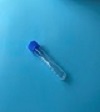
N-Methylhistamine, random urine-994
Test info
Histamine Metabolites
Urinary N-Methylhistamine
NMHR
NMH
N-Methylhistamine
Screening for and monitoring of mastocytosis and disorders of systemic mast-cell activation, such as anaphylaxis and other forms of severe systemic allergic reactions using random urine specimens
Monitoring therapeutic progress in conditions that are associated with secondary, localized, low-grade persistent, mast-cell proliferation and activation such as interstitial cystitis
Specimen
Patient must not be taking monoamine oxidase inhibitors (MAOIs) or aminoguanidine as these medications increase N-methylhistamine (NMH) levels.
Collect a random urine specimen, no preservative, within a few hours of symptom onset.
Transfer 5 mL randome urine to a Screw cap transfer vial/tube (Mayo T914)
Refrigerated (preferred) – 28 days
Ambient – 14 days
Frozen – 28 days
Performance
NMHR1: Liquid Chromatography-Tandem Mass Spectrometry (LC-MS/MS)
CRETR: Enzymatic Colorimetric Assay
Clinical and Interpretive info
0 - 5 years: 120 - 510 µg/g creatinine
6 - 16 years: 70 - 330 µg/g creatinine
> 16 years: 30 - 200 µg/g creatinine
Increased concentrations of urinary N-methylhistamine (NMH) are consistent with urticaria pigmentosa (UP), systemic mastocytosis, or mast-cell activation. Because of its longer half-life, urinary NMH measurements have superior sensitivity and specificity than histamine, the parent compound. However, not all patients with systemic mastocytosis or anaphylaxis will exhibit concentrations outside the reference range and healthy individuals may occasionally exhibit values just above the upper limit of normal.
The extent of the observed increase in urinary NMH excretion is correlated with the magnitude of mast-cell proliferation and activation, UP patients, or patients with other localized mast-cell proliferation and activation, show usually only mild elevations, while systemic mastocytosis and anaphylaxis tend to be associated with more significant rises in NMH excretion (2-fold or more). There is, however, significant overlap in values between UP and systemic mastocytosis, and urinary NMH measurements should not be relied upon alone in distinguishing localized from systemic disease.
Up to 25% variability in random-urine excreted levels may be observed, making 24-hour urine collections preferable for cases with borderline results.
Children have higher NMH levels than adults. By the age of 16, adult levels have been reached.
Billing
82570

